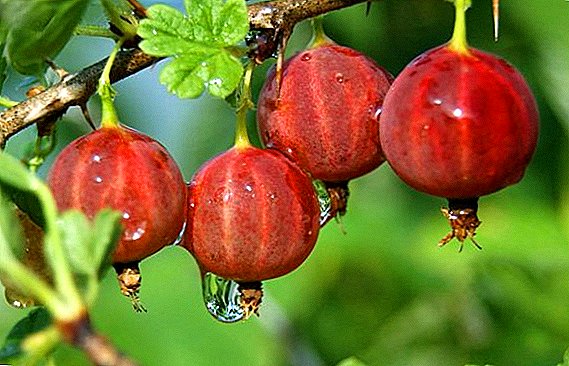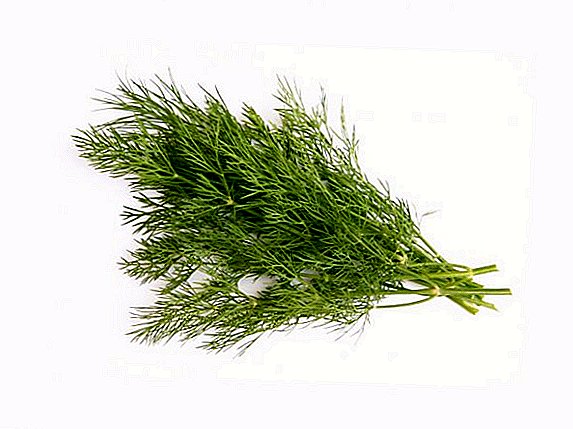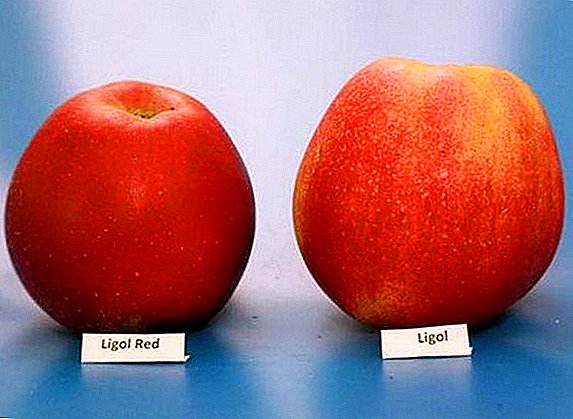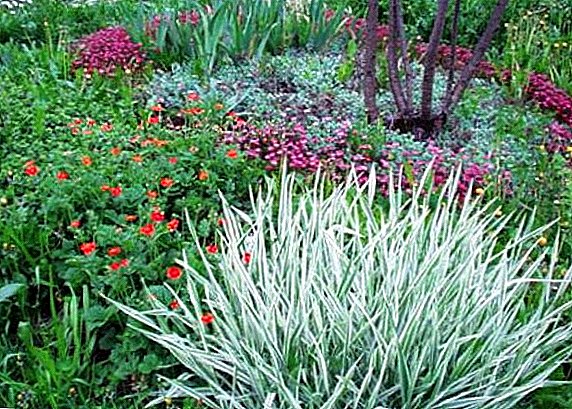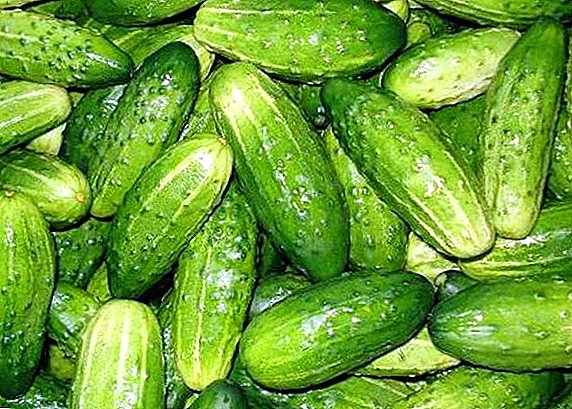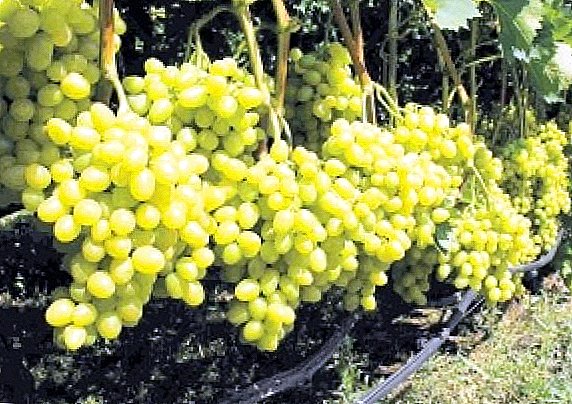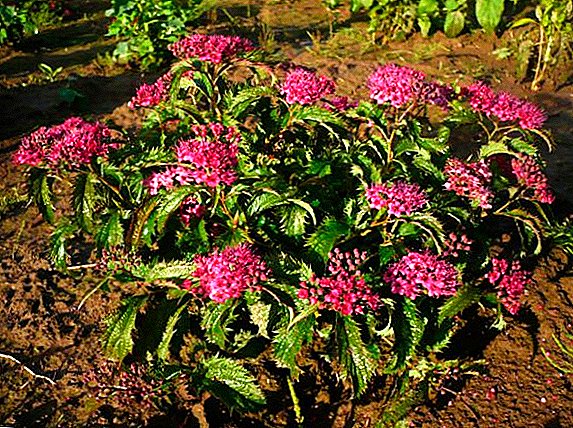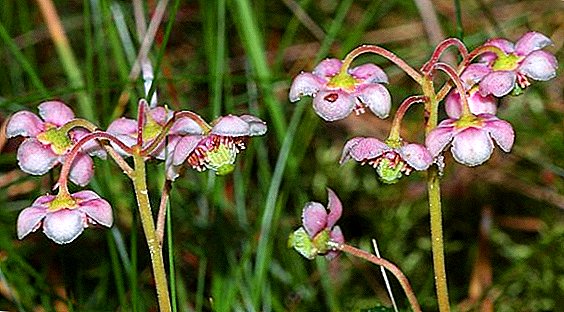 Winterikel umbrella - a perennial plant of the heather family. In the people she wears many names - winter grass, core, outcast, sukhovishnik. Since the days of the North American Indians, this herb is used in traditional medicine as a therapeutic agent for many diseases. Let's see what benefits the winterizer has to the human body, and whether there are any contraindications for its use.
Winterikel umbrella - a perennial plant of the heather family. In the people she wears many names - winter grass, core, outcast, sukhovishnik. Since the days of the North American Indians, this herb is used in traditional medicine as a therapeutic agent for many diseases. Let's see what benefits the winterizer has to the human body, and whether there are any contraindications for its use.
Description
The winter-lover umbrella is an evergreen shrub up to 25 cm in height with a creeping root and a straight stalk. The shoots in the lower branching. The leaves are large, rigid, short-petiolate, up to 15 cm long. They have an elongated, oblong shape with pointed, serrate edges. The plant blooms from June to August with delicate pink flowers, which are gathered in umbellate tassels of 8-12 flowers on a long pedicel. Corollas wide open, 1.5 cm in diameter. Fruits form in September and have a spherical, slightly flattened form with short hairs.
Did you know? The name of the winter woman in translation from the language of the Indians Cree means "grinding into small pieces." It was believed that e leaves contain a substance that breaks up kidney stones.
Composition
Wintering plant umbrella has the richest chemical composition:
- macro- and microelements: potassium, magnesium, manganese, copper, nickel;
- tannins;
- organic compounds;
- triterpenoids;
- glycosides;
- methyl esters;
- phenols;
- acids: salicylic, quinic, gallic;
- bitterness (urson).
Learn more about medicinal plants such as: meer, three-leaf watch, walker, onosma, creeping bitter, centaury, astragalus, bonfire, bedstraw, Lesopida, serpentine head, sedge, book, pike, yasnotka and Zubrovka.
Indications for use
Due to the content of a large number of useful components, the grass and leaves of the plant have unique healing properties and have a diuretic, anti-inflammatory, hemostatic, antiseptic, astringent effect. Wintergreen is used to treat many diseases:
- gout;
- edema;
- tuberculosis;
- skin diseases;
- gastritis;
- stomach ulcers;
- diabetes;
- prostatitis;
- joint diseases;
- cystitis;
- liver and kidney disease;
- depression;
- cancer diseases.
Did you know? The first European settlers of North America adopted a winter house after seeing how popular it was with the Indians. Used the plant mainly to stop the blood, it later came in handy in the Civil War.
Recipes of traditional medicine
Since ancient times, treatment with folk methods is considered more effective than the use of chemicals. The main thing is to know the amount and effect of the prepared agent Traditional medicine uses the ground part of a wintergreen for making compresses and lotions, various decoctions, tinctures, alcoholic tinctures:
- Compresses and lotions are used to treat skin diseases, rheumatism, burns, to stop the blood, they relieve eye inflammation.
- Herbal extracts regulate blood sugar levels, break down kidney stones, are recommended for maintaining immunity, for treating gout and joint diseases, for cystitis, and gynecological diseases.
- Vodka tincture will help with pulmonary tuberculosis and intestinal diseases.
- Broth normalizes the menstrual cycle in women and treats prostatitis in men, improves the functioning of the digestive system and is effectively used for weight loss, reduces swelling.

Important! It is strictly forbidden to use wintering herb as the main drug for self-treatment without consulting a specialist.
General recipe
The recipe for tonic and relieves general physical fatigue means is quite simple:
- 2 teaspoons of dry grass pour one cup of boiling water;
- let it brew for a couple of hours;
- strain.
Tincture with tuberculosis
- In 500 g of vodka pour five tablespoons of dried winter food.
- Cover and store in a dark place.
- Insist 25-30 days.
- Shake and filter before use.
Take 30 drops before meals three times a day. 
Infusion in diseases of the kidneys, bladder
- In 300 ml of boiling water pour a teaspoon of dry chopped herbs.
- Let it stand for 4 hours.
- Strain.
Broth for prostate, uterine bleeding, diseases of the gastrointestinal tract
- Tablespoon dry winterizer pour a glass of cold water.
- Put on the fire and cook 5 minutes after boiling.
- Insist 2 hours.
- To filter
Infusion with diabetes
- 2 tsp of crushed winterizer pour in 300 ml of boiling water.
- Insist 2 hours.
- Strain.
In case of diabetes, take marigold, Jerusalem artichoke, turnip, yucca, blueberry, white acacia, viburnum, creeping couch, dogwood, stevia, currant, cactus, orange, apricot, green onions, blueberries, beets, parsley, Chinese cabbage, aspen, chaff, and purple carrot.
Broth for cancer
For internal cancer:
- in 250 ml of boiling water pour one tablespoon of chopped herbs;
- simmer on low heat for 7-10 minutes;
- to filter.

Important! In case of external cancers of the lips, mammary glands, tonsils and carcinoma, the use of decoction is also possible in the form of lotions several times a day.
Contraindications
With its beneficial properties, the winterizer can still cause harm to the body. She has several contraindications:
- allergy and idiosyncrasy;
- increased blood clotting, thrombophlebitis;
- chronic constipation;
- hemorrhoids;
- excessive irritability and hypertension;
- pregnancy and breastfeeding period.



